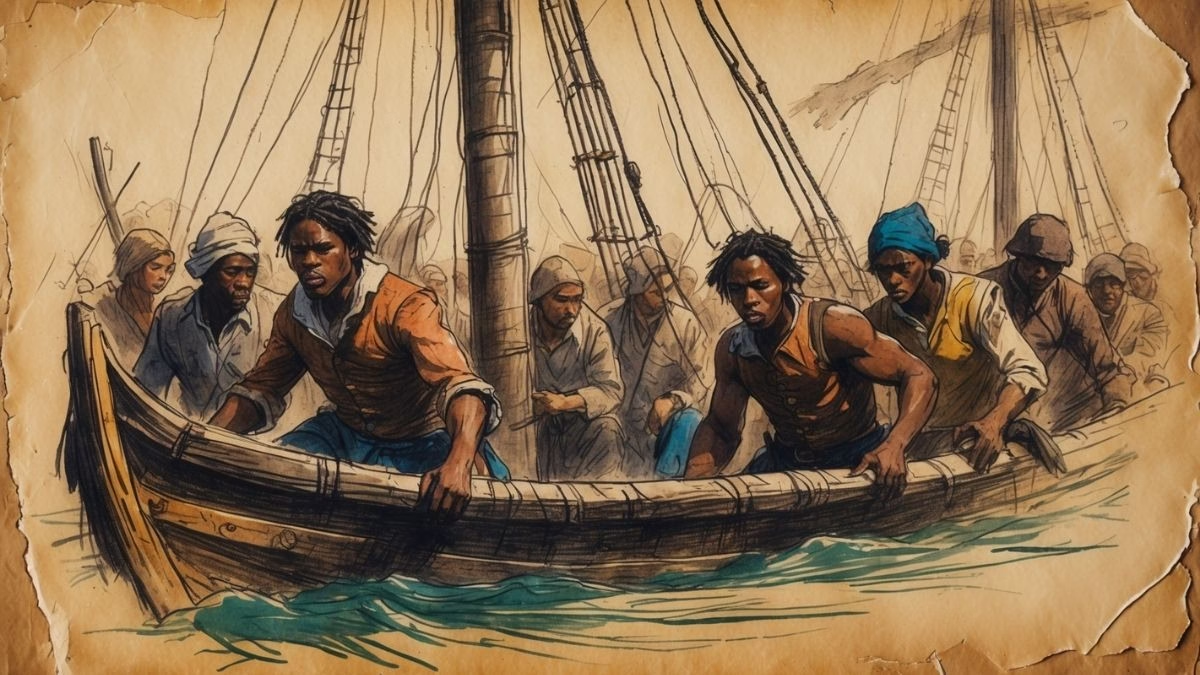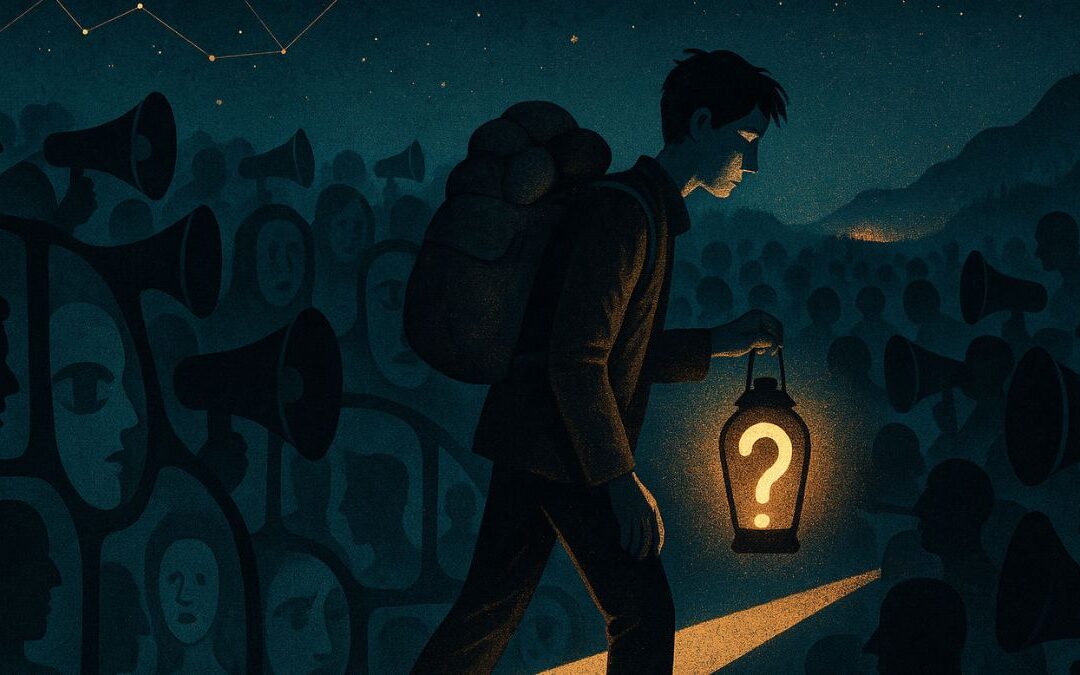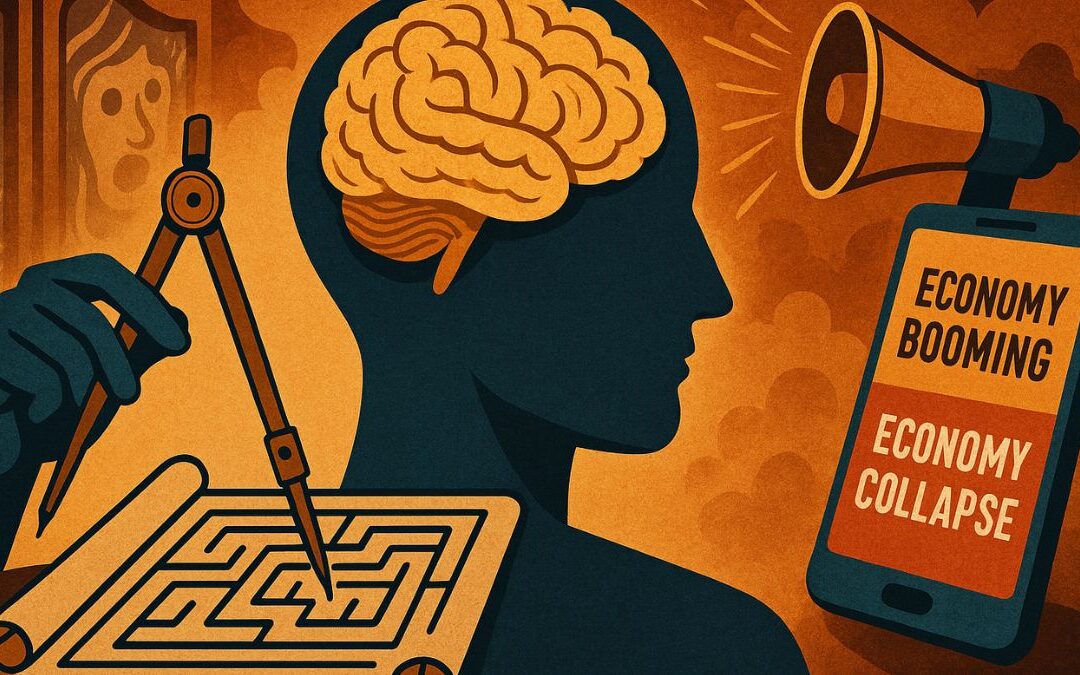Critical Listening Practice: The Transatlantic Slave Trade
This listening practice addresses a difficult and important topic: The Story of the Transatlantic Slave Trade. When dealing with sensitive subjects, it’s vital to listen for the speaker’s tone and purpose. Is the tone purely academic and detached, or is it solemn and mournful? Does the speaker aim only to inform, or also to emphasize the human cost of historical events? Paying attention to the choice of words—like “brutal,” “dehumanizing,” or “catastrophic”—will help you understand the speaker’s perspective and the deeper meaning behind the facts.
For this exercise, focus on understanding the structure of the system being described. Who were the participants? What were the economic motivations? What were the consequences? Try to map out the interconnected parts of this tragic history. This approach will help you process the complex information and answer the questions accurately and thoughtfully.
Listening Audio
Listening Transcript: Please do not read the transcript before you listen and answer the questions.
The Story of the Transatlantic Slave Trade
Good morning. Today, we will address a topic of profound gravity and enduring consequence in world history: the transatlantic slave trade. This system, which operated for roughly four centuries from the late 15th to the late 19th century, represents one of the largest forced migrations in human history and stands as a brutal chapter in the story of globalization. Its legacy continues to shape societies, economies, and racial dynamics on every continent touched by its insidious reach.
The transatlantic slave trade is often conceptualized as one leg of a three-part system known as the triangular trade. This devastatingly efficient economic model connected Europe, Africa, and the Americas. The first leg involved European ships sailing to the West African coast, carrying manufactured goods such as textiles, guns, and rum. These goods were then traded with African rulers and merchants for enslaved people. The individuals captured were prisoners of war, people kidnapped from their villages, or those convicted of crimes, swept into a vast and violent network that fed the European demand for labor.
The second leg of the triangle was the infamous Middle Passage. This was the horrific journey of enslaved Africans across the Atlantic Ocean to the Americas. Packed onto specially designed slave ships in the most squalid and dehumanizing conditions imaginable, millions of men, women, and children endured a voyage that typically lasted one to three months. Disease, malnutrition, and sheer brutality were rampant. It is estimated that between 15 and 20 percent of the enslaved people transported did not survive this journey. The Middle Passage represents a catastrophic loss of life and an indelible stain on human history. Those who did survive the journey were stripped of their names, their families, and their humanity, sold at auction as chattel slavery—meaning they were considered the legal property of their owners, to be bought, sold, and inherited like livestock.
Upon arrival in the Americas, particularly in Brazil, the Caribbean, and the southern colonies of North America, the enslaved Africans were forced into brutal labor. This was the third leg of the triangle. The products of their labor—sugar, cotton, tobacco, coffee, and other raw materials—were then shipped back to Europe, generating immense wealth for European nations and fueling the Industrial Revolution. This system was, therefore, a foundational element of the modern global economy, built upon the exploitation of millions. The enslaved people were forced to work under the constant threat of violence, with no rights, no freedom, and no hope of returning home. Their lives were defined by grueling work, poor living conditions, and the systematic destruction of their cultures, languages, and kinship bonds.
Despite the overwhelming oppression, the history of slavery is also a history of resistance. Resistance took many forms. It could be covert, such as working slowly, feigning illness, or breaking tools. It included cultural resistance, as enslaved people struggled to preserve elements of their African heritage, music, and spirituality, often blending them with European traditions to create new, syncretic cultures. And there was overt, armed resistance, including countless shipboard revolts during the Middle Passage and organized slave rebellions in the Americas, such as the Haitian Revolution, which resulted in the establishment of the first independent black republic in 1804.
The movement to end this barbaric trade and institution, known as abolitionism, grew in strength during the late 18th and 19th centuries. It was driven by the tireless efforts of formerly enslaved people, like Olaudah Equiano and Frederick Douglass, who wrote powerful narratives exposing the horrors of slavery, as well as by sympathetic white activists and religious groups who argued for its immorality. Great Britain outlawed the slave trade in 1807 and abolished slavery in its empire in 1833. Other nations followed suit, though the institution persisted in the United States until the end of the Civil War in 1865 and in Brazil until 1888.
The abolition of slavery did not end the profound damage it had caused. The legacy of the transatlantic slave trade is deep and far-reaching. It created the African diaspora, scattering people of African descent across the globe. It established deeply entrenched patterns of racism and systemic inequality that persist to this day. And it left a legacy of economic disparity between nations. To understand the modern world, we must confront the history of the transatlantic slave trade, not as a distant event, but as a foundational force that has shaped the very fabric of our societies. Thank you.
Listening Quiz
Keywords & Phrases
- ‘gravity’ means extreme importance or seriousness. Saying a topic has “profound gravity” means it is a very serious and weighty subject that must be treated with respect.
- Insidious: (adjective) This describes something that proceeds in a gradual, subtle way, but with very harmful effects. We used it to describe the “insidious reach” of slavery’s legacy, meaning its negative consequences (like racism) have spread and become embedded in society in ways that are not always immediately obvious.
- Triangular trade: (phrase) This is the specific historical term for the three-legged trade route connecting Europe, Africa, and the Americas, which had the transatlantic slave trade as its central, most brutal component.
- Squalid: (adjective) This means extremely dirty and unpleasant, especially as a result of poverty or neglect. We used it to describe the “squalid and dehumanizing conditions” on the slave ships.
- Chattel slavery: (phrase) This is a specific legal term. ‘Chattel’ means a personal possession. “Chattel slavery” is a system where the enslaved person is considered the legal property (chattel) of the owner and can be bought and sold like an animal or an object.
- Covert: (adjective) This means not openly acknowledged or displayed; secret or hidden. We used it to describe “covert” forms of resistance, like working slowly, which were subtle acts of defiance, as opposed to overt (open) rebellion.
- Syncretic: (adjective) This describes the combining of different beliefs or practices. We mentioned “syncretic cultures” to explain how enslaved Africans blended their own spiritual and musical traditions with those of their captors to create new, unique cultural forms.
- Overt: (adjective) This means done or shown openly; not secret or hidden. It’s the opposite of covert. “Overt, armed resistance” refers to slave rebellions, which were open and violent confrontations.
- Abolitionism: (noun) This was the historical movement to end, or abolish, the slave trade and slavery itself. A person who was part of this movement is called an abolitionist.
- Diaspora: (noun) This term refers to the dispersion of any people from their original homeland. The “African diaspora” specifically refers to the communities throughout the world that have resulted from the historic movement, largely forced, of peoples from Africa.












0 Comments